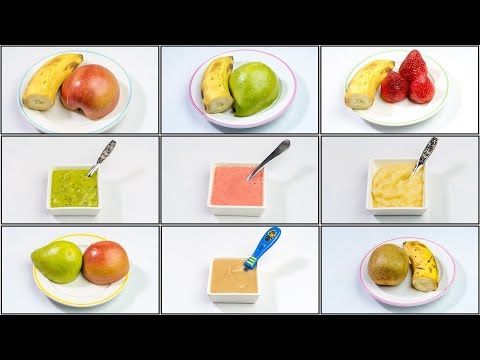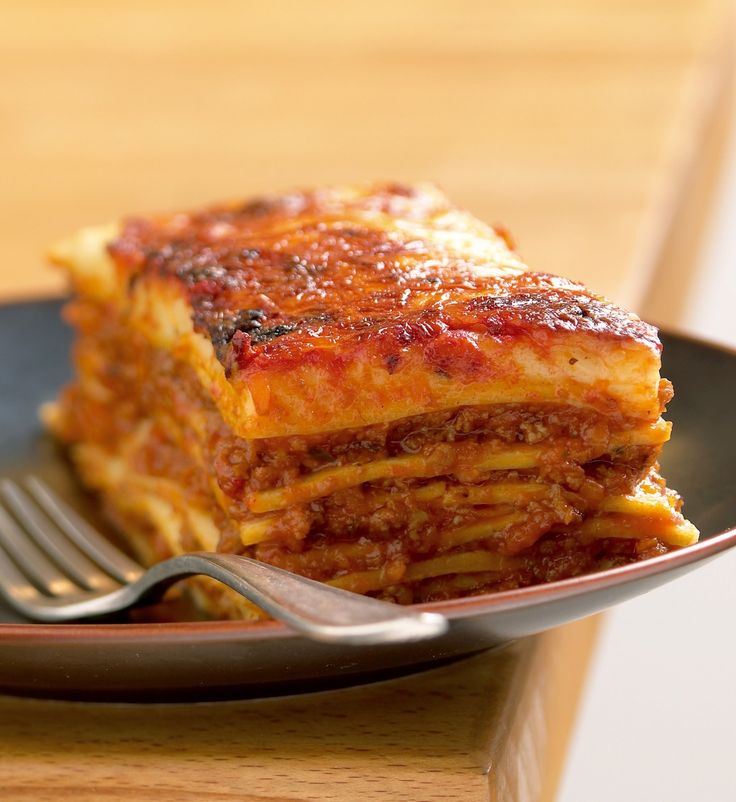1Year old baby food chart
1 Year Baby Food Chart
| | by Dr Hemapriya
Congratulations, your baby has turned one! Introduce your toddler to a variety of new foods and flavors with the help of our 1 Year Baby Food Chart.
1 Year Baby Food Chart with Indian Recipes
Week 1
Week 2
Week 3
Week 4
Buy Healthy Nutritious Baby, Toddler food made by our own Doctor Mom !
After waiting all these months, your little baby has turned one!!
This is a huge milestone – both for baby and the parents. Turning one now makes your baby officially a toddler, and he’s probably already toddling around the home – faster than you can catch him!
Your little one’s life is going to change as she continues to grow rapidly, and the biggest change is going to be in the area of food. From now on, your baby is ready to have all the foods that were restricted for babies under one. Which means it’s time for a brand new food chart!
By now your baby is already having most household meals except for those restricted foods and now you can go ahead and feed your baby everything you make for the rest of the family, with less salt and spices. Of course, it is important to consider things like food allergies and choking hazards, and we recommend consulting your child’s pediatrician in case of any doubt.
So the list of foods to avoid has significantly decreased, but toddlerhood brings with it new challenges, especially fussy eating. Your baby is going to be more adamant about his likes and dislikes, and you’ll have to use quite a bit of creativity to work around it.
Toddlers tend to have phases where they eat only one food and reject everything else. In this situation, nutritional deficiencies are a real risk, but you can keep them away by adding a supplementary food like a multigrain health drink or dry fruits powder which ensures many vital nutrients in a small amount.
It is recommended to continue breastfeeding for as long as you and your baby are comfortable, but if you are planning to wean, consider weaning your toddler gently to avoid distress. If you’re planning to start potty training, get all the tips in our ultimate potty training guide.
The food chart we’ve created here includes recipes common in most Indian households. Finger Foods still make the best snacks, and it’s also important to ensure your baby drinks sufficient water throughout the day.
Week 1Week 2Week 3
Week 4
No time to prepare baby food at home? Don’t worry, we prepare it hygienically and ship it to your doorstep. All food products are made FRESH only after the order is placed
Buy Now
Use these food charts and plan your baby’s meals using a Printable Meal Planner. You can also keep a “Baby Food Diary” to track your little one’s favorite recipes and food allergies if any.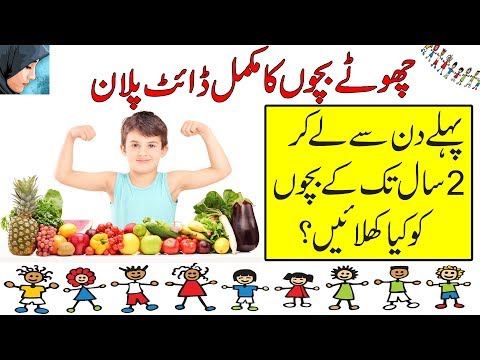
Here are our most popular baby recipes:
- 10 Easy Khichdi Recipes
- 10 Easy baby Porridge Recipes
- Dry Fruit Powder Recipe (Weight Gaining Food)
- Weight Gaining Foods for Babies and toddlers
- Instant porridge Recipes for Travel for Babies and Toddlers
Check out baby food charts for other months here:
Have you downloaded our Free E-Book on 50 First Food Recipes for babies? Click here to download.
Disclaimer: The information presented here is meant as a guide and does not replace professional medical advice. You should always discuss your baby’s dietary requirements with your doctor.
Stay updated with all our latest recipes and posts on parenting by following us on Facebook, Instagram, Twitter, Pinterest and Google +.
Post updated on – 26 October 2019
Post first published on – 27 April 2015
Buy Healthy Nutritious Baby, Toddler food made by our own Doctor Mom !
Shop now!Feeding & Nutrition Tips: Your 2-Year-Old
Log in | Register
Ages & Stages
Ages & Stages
Listen
Español
Text Size
With your two-year-old's blossoming language and social skills, they're ready to become an active mealtime participant. They should no longer be drinking from a bottle, and can eat the same food as the rest of the family. Their diet should now include three healthy meals a day, plus one or two snacks.
They should no longer be drinking from a bottle, and can eat the same food as the rest of the family. Their diet should now include three healthy meals a day, plus one or two snacks.
Here are some tips to help your little one develop healthy, safe eating habits and get the nutrition their growing bodies need.
Mealtime tips for toddlers
Try not to fixate on amounts of food they are eating.
Avoid making mealtimes a battle.
Pay attention to adopting healthy eating habits—including sitting as a family at mealtime.
Focus on making healthy food choices as a family.
Unsafe foods for toddlers: choking risks
At two years old, your child should be able to use a spoon, drink from a cup with just one hand, and feed themselves a wide variety of finger foods. However, they are still learning to chew and swallow efficiently and may gulp food down when in a hurry to get on with playing. For that reason, the risk of choking at this age is high.
For that reason, the risk of choking at this age is high.
Avoid these foods, which could be swallowed whole and block the windpipe:
Hot dogs (unless cut in quarters lengthwise before being sliced)
Chunks of peanut butter (Peanut butter may be spread thinly on bread or a cracker, but never give chunks of peanut butter to a toddler.)
Nuts—especially peanuts
Raw cherries with pits
Round, hard candies—including jelly beans
Gum
Whole grapes
Marshmallows
Raw carrots, celery, green beans
Popcorn
Seeds—such as processed pumpkin or sunflower seeds
Whole grapes, cherry tomatoes (cut them in quarters)
Large chunks of any food such as meat, potatoes, or raw vegetables and fruits
The best foods for toddlers include:
Protein foods like meat, seafood, poultry, eggs, nuts, seeds and soy
Dairy such as milk, yogurt, cheese or calcium-fortified soymilk
Fruits and vegetables
Grains such as whole wheat bread and oatmeal
It is normal for toddlers to choose from a limited number of foods, reject foods entirely, and then change their preferences over time. Never force your child to eat something they do not want to eat. The best approach is to let your child to choose from 2 to 3 healthy options, and continue to offer new foods as their tastes change.
Never force your child to eat something they do not want to eat. The best approach is to let your child to choose from 2 to 3 healthy options, and continue to offer new foods as their tastes change.
Offering a variety of foods and leaving the choices up to your child will eventually allow them to eat a balanced diet on their own. Toddlers also like to feed themselves. So, whenever possible, offer your child finger foods instead of cooked ones that require a fork or spoon to eat.
Supplements for some children
Vitamin supplements are rarely necessary for toddlers who eat a varied diet, with a few exceptions.
Vitamin D. Infants under 12 months of age require 400 International Units (IU) of vitamin D per day and older children and adolescents require 600 IU per day. This amount of vitamin D can prevent rickets—a condition characterized by the softening and weakening of bones. If your child is not regularly exposed to sunlight or is consuming enough vitamin D in their diet, talk to your pediatrician about a vitamin D supplement. See Vitamin D for Babies, Children & Adolescents for more information and a list of vitamin D-enriched foods.
See Vitamin D for Babies, Children & Adolescents for more information and a list of vitamin D-enriched foods.
Iron. Supplemental iron may be needed if your child eats very little meat, iron-fortified cereal, or vegetables rich in iron. Large quantities of milk (more than 32 ounces [960 mL] per day) also may interfere with the proper absorption of iron, increasing the risk of iron deficiency anemia.
Calcium. Your child should drink 16 ounces (480 mL) of low-fat or nonfat milk each day. This will provide most of the calcium they need for bone growth and still not interfere with their appetite for other foods—particularly those that provide iron.
Note: Children stay on whole milk until they are two years of age—unless there is a reason to switch a baby to low-fat milk sooner. Whole milk contains approximately 4% milk fat. It may help to gradually switch your child from whole milk to a lower-fat milk. Therefore, many pediatricians recommend that children get reduced fat (2%) milk for a few weeks before switching them to low fat (1%) or no fat (skim) milk.
Therefore, many pediatricians recommend that children get reduced fat (2%) milk for a few weeks before switching them to low fat (1%) or no fat (skim) milk.
More information
- Sample Menu for a Two-Year-Old
- Feeding & Nutrition Tips: Your 3-Year-Old
- Selecting Snacks for Toddlers
- I Need a Treat: How to Tame Your Child's Sweet Tooth
- Diagnosis and Prevention of Iron Deficiency and Iron Deficiency Anemia in Infants and Young Children (0-3 Years of Age) (AAP Clinical Report)
- Last Updated
- 9/6/2022
- Source
- American Academy of Pediatrics Section on Obesity (Copyright © 2022)
The information contained on this Web site should not be used as a substitute for the medical care and advice of your pediatrician. There may be variations in treatment that your pediatrician may recommend based on individual facts and circumstances.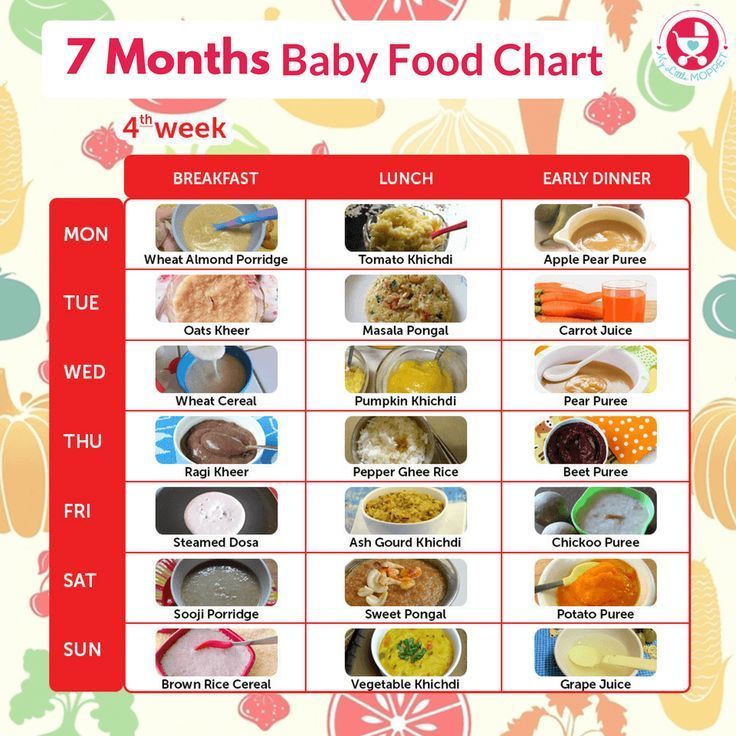
Union of Pediatricians of Russia
Nutrition for children from 1 to 3 years of age
The period from 1 to 3 years of life is a crucial stage in the transition to an adult type of nutrition, which has certain features. In order to ensure that all the necessary nutrients enter the child's body and at the same time prevent an excess of individual nutrients, nutrition should be balanced and varied.
The daily amount of food for children aged 1 to 1.5 years should be 1000-1200 g, from 1.5 to 3 years - 1200-1500 g, the amount of food in one feeding should not exceed 300-350 ml. The diet consists of three main meals per day and two snacks. It is considered optimal when breakfast is 25% of the total energy density of the diet, lunch is 30–35%, dinner is 20%, and additional meals are about 10%. In general, the child can eat the same food as the rest of the family.
In the diet of a child of 1–3 years of age , must be present daily: meat of animals or poultry, dairy and sour-milk products, vegetables, fruits, bread, cereals, vegetable and butter; fish and eggs are included in the diet 2-3 times a week.
Cereal products: bread - 2-3 servings per day, cereals and side dishes - 1 time per day
Fruit and/or vegetables: at least 5 times a day
Dairy products: at least 3 servings per day (including those used to make cereals, yoghurts, fermented milk drinks, cottage cheese, infant formula or breast milk).
Domestic pediatricians recommend, when compiling a diet for children aged 1–3 years, preference should be given to specialized children's dairy products of industrial production that meet high quality requirements and safety indicators for this age. Most children's dairy products are additionally enriched with vitamins and/or minerals and other biologically active components, taking into account the physiological needs of children of this age. At the same time, in foreign recommendations, children over 1 year old are offered the gradual introduction of whole cow's milk, which is rich in fats necessary for proper growth and development, the absorption of vitamins A and D, the development of the child's brain and nervous system.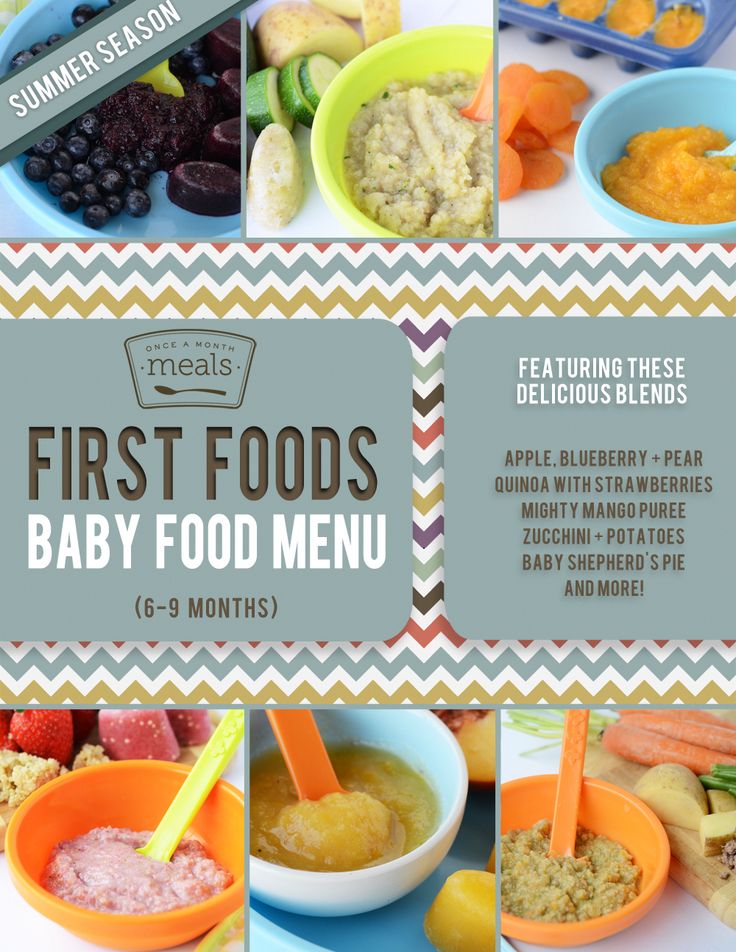
Meat dishes: 2-3 times a day
Fish dishes: 2-3 servings per week
Eggs: 2-3 per week
Dietary fats: 3-4 teaspoons of butter and/or vegetable oils per day
When cooking, use the minimum amount of salt and sugar, and do not add them to industrial products.
Offer your child a variety of foods and let them choose for themselves. Children love to eat on their own, so if possible, offer food that the child can eat with their hands.
It is important to remember that a baby can choke on pieces of food, so whatever you give your baby should be crushed or cut into small pieces that can be easily chewed.
Do not give to a small child: nuts, whole grapes, cherry tomatoes (unless quartered), whole carrots, seeds (such as pumpkin or sunflower seeds), round candies, legumes, raisins, because a child can eat them choke.
Also in the diet of children of the first 3 years of life should not be present:
Mushrooms; canned snacks, pickled vegetables and fruits
Home canned food
Dry concentrates for side dishes
Hot sauces, mustard, horseradish, pepper, vinegar, mayonnaise
Natural coffee
Juices and drinks in the form of dry concentrates; sweet carbonated drinks
Products containing food additives (flavorings, dyes of artificial origin, including chewing gum), popcorn
Combined fats; cakes and pastries
It is important to remember that children of this age should not be given too spicy and spicy foods.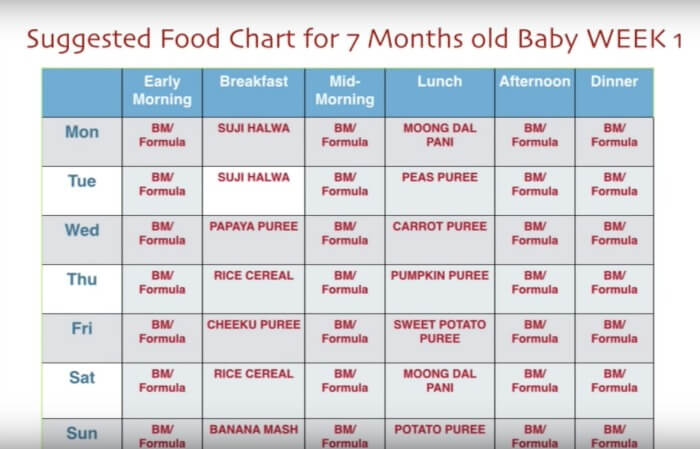
How to feed a child at 1 year old? Balanced baby nutrition: sample diet
Proper nutrition of a child in a year is an important condition for harmonious growth and development. In addition, a properly composed diet helps to strengthen the immune system. Receiving new products, the baby gradually gets acquainted with the diet. Pediatricians advise paying attention to the child's diet, its proper balancing.
Nuances of nutrition
The diet of a child in 1 year is subject to the following principles:
- should be complete, meet all the needs of the body, provide vitamins, micro- and macroelements;
- diversity. As many combined foods as possible should be present in the diet daily;
- all food must be chopped.
To properly balance the diet, it is necessary to include specialized foods. They should be designed according to the needs of the child's body in a year. If you have any doubts or questions regarding the nutrition of your baby, you can seek advice from our doctors. They will remotely select an individual diet, tell you about all the nuances of the nutrition of one-year-old babies.
They will remotely select an individual diet, tell you about all the nuances of the nutrition of one-year-old babies.
Diet must not be violated
The most advantageous is the diet according to the schedule. An individual nutrition program contributes to the rapid accustoming of the child to the daily routine. Even intervals between meals will not let the baby get hungry. According to the WHO, a child's diet at 1 year old should include breakfast, lunch, dinner, and an afternoon snack.
Meal plan for the day:
| Name | Description |
| 9.00 - breakfast | If the child gets up early, in this case it is permissible to feed an hour earlier. All other meals are shifted by an hour |
| 12.30 - lunch | Before dinner, it is recommended to take a walk, which will increase the appetite. |
| 16.30 - afternoon snack | The amount of food is small. Eating easy |
| 19.00 - dinner | Dinner is served on the table two hours before bedtime. |
Important! When preparing food, it is necessary to refuse zazharki, fatty and fried foods. The first meat broths merge. Salt and sugar are added in a minimal amount.
Which products to prefer
WHO recommends including the following foods in the children's menu:
- dairy products. Children under the age of one year do not give milk in its pure form. It is replaced with breast milk or mixtures. Kefir and yogurt are introduced gradually. Their fat content should not exceed 3.2 percent. Sour cream and cheeses are allowed to be given no more than twice a week;
- cereals.
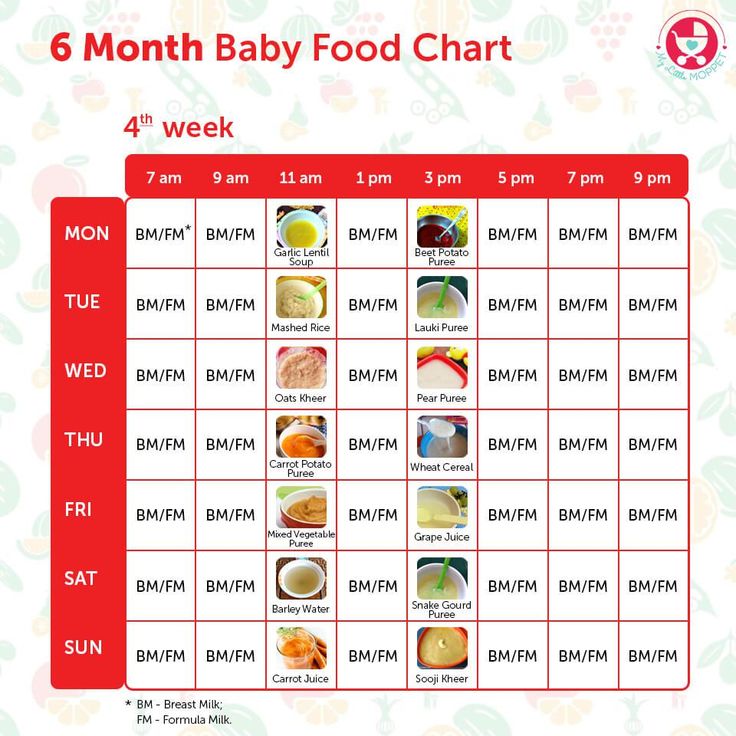 Porridge for a one-year-old child is given only for children. Adult coarse cereals are poorly digested in the baby's body. Allowed: oatmeal, buckwheat, millet, corn, rice porridge;
Porridge for a one-year-old child is given only for children. Adult coarse cereals are poorly digested in the baby's body. Allowed: oatmeal, buckwheat, millet, corn, rice porridge; - vegetables fruits. By the age of 1, the child is familiar with apples, pears, bananas, prunes, zucchini, broccoli, carrots, potatoes. After a year, kiwi, beets, peas, apricots, beans are introduced into the diet. Legumes are given twice a week. The rest of the vegetables and fruits are allowed for use every day;
- meat fish. Hake, pollock, cod are given twice a week, low-fat meat varieties - daily;
- oil. Butter and vegetable oils are added to ready meals. If the child already chews well enough, it is permissible to smear butter on bread. vegetable oils are chosen only unrefined;
- eggs. Up to a year it is allowed to introduce quail eggs, after a year they give chicken no more than three times a week.
Case study: One-year-old Pasha's mother made the following menu for him for the day, which she plans to feed him until he is 1. 5 years old: For breakfast, porridge/vegetable dishes, cottage cheese 200 g, drink 100 ml. Lunch consists of salad - 30 g, soup - 50 g, second meat course - 50 g, vegetables / cereals - 70 g, compote - 100 ml. For an afternoon snack, mom offers ryazhenka or kefir - 150 ml, cookies, crackers - 15 g, juice, fruits - 100 g. For dinner, cereals / cottage cheese / vegetables are served - 180 g, fermented milk products - 100 ml, fruits - 50 g.
5 years old: For breakfast, porridge/vegetable dishes, cottage cheese 200 g, drink 100 ml. Lunch consists of salad - 30 g, soup - 50 g, second meat course - 50 g, vegetables / cereals - 70 g, compote - 100 ml. For an afternoon snack, mom offers ryazhenka or kefir - 150 ml, cookies, crackers - 15 g, juice, fruits - 100 g. For dinner, cereals / cottage cheese / vegetables are served - 180 g, fermented milk products - 100 ml, fruits - 50 g.
Further, the weight of the products will gradually increase with the age of Pasha. Mom made up the optimal variant of the diet together with specialists.
Prohibited products for children from the year
The list of products not recommended for baby food includes:
- any kind of sausages, sausages;
- fried food;
- smoked meats;
- exotic vegetables, fruits;
- caramel, chewing gum;
- products containing flavor enhancers, dyes; flavors.
Children are limited in food with a lot of cholesterol, nuts. The latter can cause an allergic reaction. It is not advisable to give mushrooms, as they overload the child's digestive tract. For all questions, you can contact our doctors at any time of the day. They will remotely adjust the diet and help balance it.
The latter can cause an allergic reaction. It is not advisable to give mushrooms, as they overload the child's digestive tract. For all questions, you can contact our doctors at any time of the day. They will remotely adjust the diet and help balance it.
Norm of food per day for a one-year-old child
The total daily calorie content should not be less than or more than 1300 Kcal. However, these figures are relative, as each child is individual. Someone develops quickly, and someone vice versa. And such children may need a supplement in the diet.
For breakfast, babies should consume at least 300 ml, for lunch - 420 ml, for an afternoon snack - 180 ml, for dinner - 300 ml.
Dr. Komarovsky advises to purchase only seasonal products. In his opinion, they will be able to provide the maximum benefit for the growing body of the child.
Daily menu for a one year old baby
Experienced doctors recommend feeding the baby up to 6 times a day. There should be 4 main meals.
There should be 4 main meals.
Breakfast
In the morning, it is preferable to give milk porridge. Milk is diluted with water before use. Proportions for cereals: 200 ml of milk per 2 tablespoons of cereals. Twice a week it is permissible to serve an omelet from 1 egg. Prepare an omelette for a couple. You can add dill. It stimulates digestion. Wash down with compote, weak tea.
Snack
Yogurts and fruit purees are allowed here. They stimulate the production of gastric juice, digestion. A healthy snack is a baked apple with cookies. Fruit purees from jars, children's drinking yogurts are suitable.
Lunch
Lunch is the main meal. It can be only the first or second course, or maybe all together. Soups are cooked thick, rich, satisfying. Broths are prepared on boneless pulp. The first is drained, and vegetables are added to the second broth. Let's add some oil. The second offers cereals on the water, vegetables, salads, meat or fish. Spices, roasts are excluded.
Spices, roasts are excluded.
High tea
For a small snack, cottage cheese casseroles, milk porridges, cheesecakes, cookies with compote, milk are suitable. Cow's milk is administered with caution. Start with small amounts, diluted with water. Observe the reaction, as cow's milk is considered an allergen.
Dinner
Dinner is scheduled five hours after the afternoon snack. Vegetable puree, porridge, stew with meat or fish are served. It is allowed to add a little oil to the stew.
When breastfeeding, the second dinner is allowed in the form of mother's milk. Children who are used to eating at night are gradually weaned from night feedings.
What to consider when formulating a diet
The nutrition of a one-year-old child should be in compliance with the regimen. You can also create a kind of ritual that will look like a joint table setting, decoration with bright napkins, original food serving.
If for some reason the child refuses to eat this or that product, he is not completely excluded from the diet. It is recommended to add it in small quantities, mixing with the main dish.
It is recommended to add it in small quantities, mixing with the main dish.
If the baby refuses to eat, it is recommended to shift the time. Perhaps the child did not have time to get hungry. Or you can go for a walk and work up an appetite.
All meals are served in sequence. Don't put everything on the table at once. In this case, the baby will be confused, will try to try everything at once.
It is necessary to introduce new products with caution, in turn, starting with small portions. At the same time, the reaction of a small organism to innovations is closely monitored. In case of allergic reactions, the product is completely excluded.
Sweets in the form of confectionery, sweets, chocolate are not offered to kids. Small amounts of honey, syrups, jams, dried fruits, cookies are allowed.
FAQ
What must be present in the menu of a child at 1 year old?
+
The diet must be present: meat, dairy products, fruits, vegetables, bread, butter. Fish and eggs are given up to three times a week.
Fish and eggs are given up to three times a week.
What are the most common mistakes parents make when preparing meals?
+
The most common mistake is a monotonous diet, consisting of the same products. It is important to try to feed your baby a variety of foods. This will allow him not only to get acquainted with new products, but also to replenish the stocks of necessary substances.
Is it permissible to include solid food in the diet if the teeth erupted a little?
+
Solid foods help form healthy eating habits. In addition, it is useful for teething. Hard pieces help form the correct bite.
Should I put my baby to sleep after eating?
+
After eating, the baby is drawn to sleep. However, putting him to bed right away is not right. If the child walked a lot, spent a lot of energy, in this case, yes, it is allowed to sleep after eating.

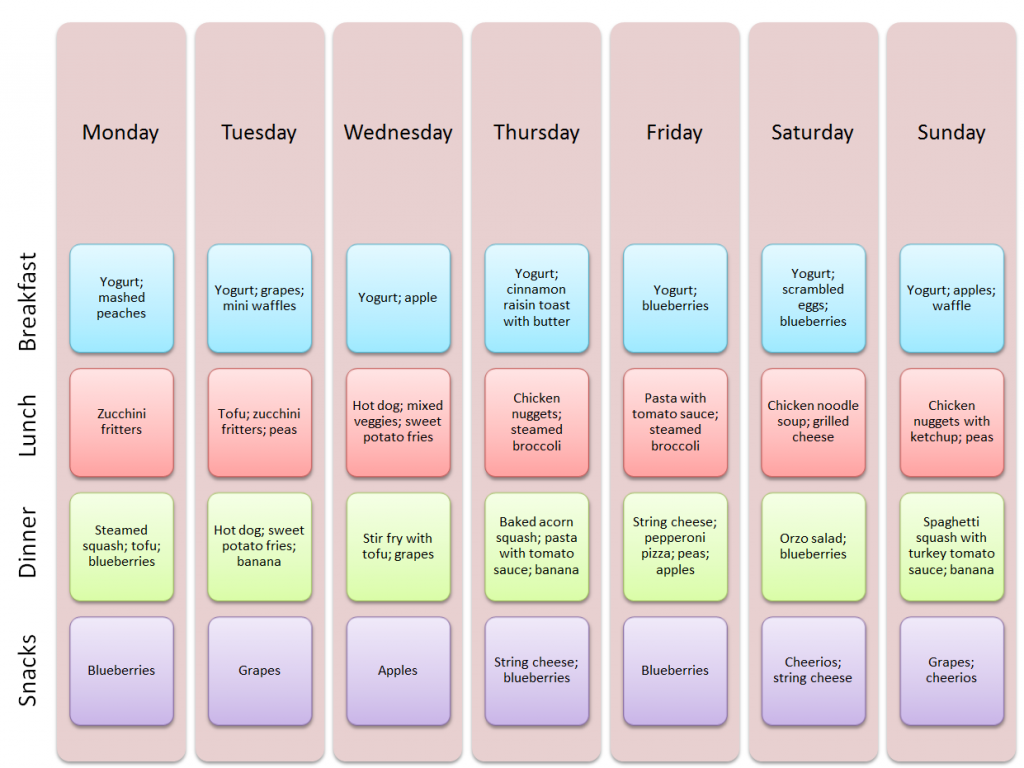 For long walks, a snack is allowed two hours before the main meal.
For long walks, a snack is allowed two hours before the main meal. 

